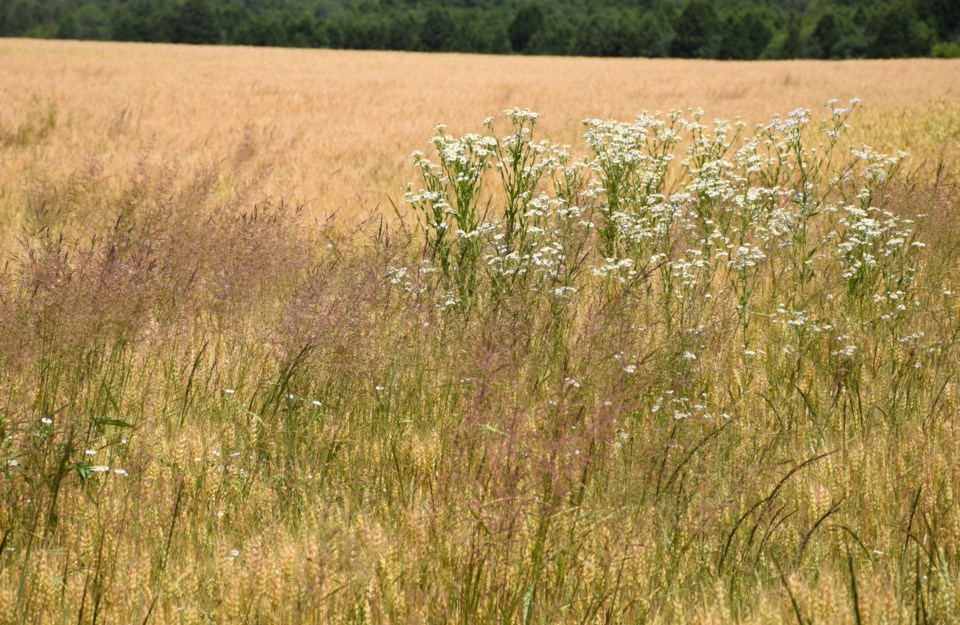All might look quiet on the agricultural front, but in the war between weeds and crops, weeds are winning.
A new theory developed by University of Guelph researcher Clarence Swanton, suggests weeds can alter crop plant growth by affecting light signals used by crop plants to communicate.
“This in itself, is revolutionary,” said Swanton, a weed scientist in the Department of Plant Agriculture at the Ontario Agricultural College.
“This whole basis of our research begins with the fact that plants are able to communicate."
Weeds are resilient, adaptable and can damage crop yields. But Swanton says altering crop plants’ light signals so they are more tolerant to weeds may increase the yield curve.
“We’ve discovered that when a plant detects a weed species, it’s asked to either grow or die. It only has a certain amount of resources it can sacrifice to defend itself,” said Swanton. “It’s an entirely new mechanism of plant competition.”
For over 20 years, Swanton has explored why crop yields still decline when weeds no longer pose a threat.
Plant competition has primarily been based on the limitation of resources of light, water and nutrients available to plants.
But Swanton and his colleagues at the United States Department of Agriculture (USDA) say that in the presence of weeds, crop plants become stressed, changing their chemical and physical behaviour.
Swanton says further research could help increase crop tolerance to weeds, produce more food, and reduce the agricultural and environmental footprint.
“We came to the realization that very early in the cross growth, if weeds were present and then removed, even under conditions of lots of water, nutrients and sun light, that there was always potential for yield loss to be recorded at the end of the season,” Swanton said.
“If plants compete for light, water and nutrients, and there’s lots available, is there something else that could be affecting the seedling? As a result, we started to look at how a crop plant can detect its environment and its neighbours.”
Plant competition begins when crop plants detect light signals from weeds.
“We started to explore how the presence of a weed, without competing for light water and nutrients, can actually change the physiology of the plant by just being near it,” Swanton said.
In terms of crop growth, Swanton says in general, if weeds emerge at the first leaf stage of crop growth, yield loss can range between 10 and 20 per cent. However, if weeds emerge two or three leaf stages later, yield loss is more likely to be between three and five per cent.
“We started to develop the idea that yield loss was actually occurring in the seedling stage, that something was changing the physiology of the plant and affecting its long-term growth,” Swanton said.
According to Swanton, these changes are not reversible and affect the plant growth right through to maturity.
“We think these are actual mechanisms. As in children’s psychology, the early environment a crop seedling experiences, and how it changes to adjust to that environment, will influence the rest of that plant’s life," Swanton said.
“We can take a corn plant and put it under conditions of lots of light, water and nutrients, so it’s not short of anything and there is no competition for those resources. In a separate container I can place a weed next to it. We can change the physiology of the corn plant just by the presence of the weed being a neighbour to it,” Swanton said.
To mitigate yield loss, Swanton and his colleagues are investigating ways to stop crop plants from responding to the light signals from weeds.
Swanton says further research is needed, specifically on the genetic and molecular levels, to properly understand the light signals and to see if there a way to make the plant more tolerant to weeds.
“It’s not that we are going to make the plant resistant to weeds, we are just trying to make the plant more tolerant so that it does not lose yield as quickly. And if we could do that, that would be a huge impact on yield, if it’s possible,” Swanton said.
“That is the long-term goal. Our research is to lay down the groundwork for that possibility.”



